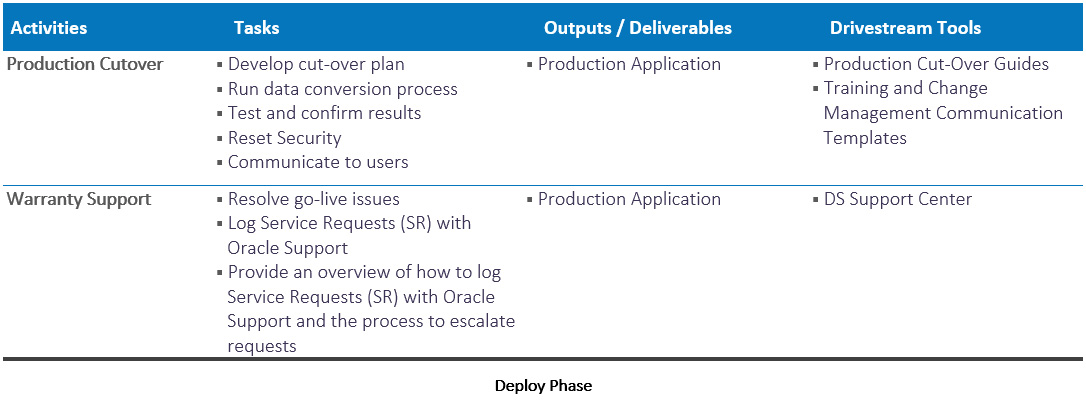Implementation Methodology
At a high-level synopsis, this implementation methodology adopts a model that includes prebuilt tools and templates.
Configuration workbooks and data conversion templates that act as “accelerators” to streamline and enhance the implementation process, a comprehensive Project Plan to efficiently reach project completion within the planned timeline, as well as project management tools and processes that help facilitate project control and governance are some examples of these prebuilt tools.
The figure below offers a high-level roadmap of our approach toward successful deployment.
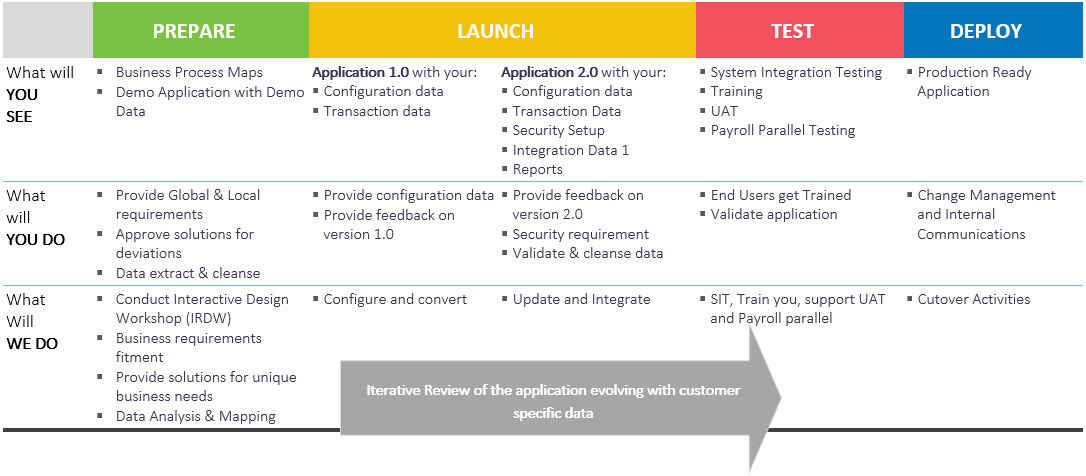
Each phase incorporates various types of strategically aligned deliverables with corresponding phased activities that Drivestream considers vital to bringing completeness to that specific phase before determining readiness for the next sequential phase. In this section, we highlight and further describe key activities within each phase of our Implementation Methodology.
Prepare Phase
During this phase we will conduct a series of Interactive Requirements and Design Workshops (IRDWs) with key stakeholders and SMEs to:
- Evaluate all critical requirements for design options and preferences.
- Review Business Process Redesign (BPR) documents and discuss best practices and establish design specifications and parameters.
- Review and confirm global design to support institution-wide reporting, analytics, and planning.
The IRDW “deep-dive” collaborative design sessions result in signoff of the functional and technical design, the requirements from which are collected by project team (along with system defaults and configuration items) and entered into DriveMethod to form the Requirement Traceability Matrix (RTM), which is closely monitored throughout implementation.
The RTM, depicted in the figure below, is the set of project tasks and success criteria tracked through project completion, the real-time status of which is always readily available to any project team member.
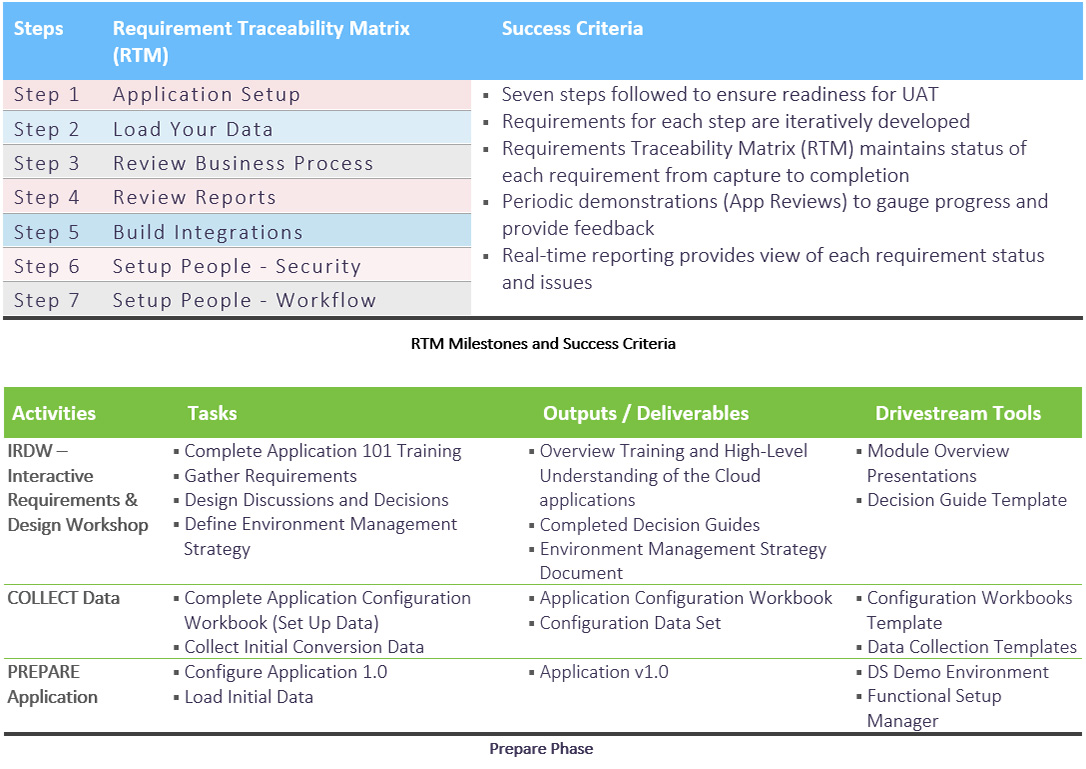
Launch Phase
During the Launch phase, Drivestream will implement a complete solution that meets specific technical requirements and business objectives. Our implementation process will include the following critical tasks
- Configure application settings and parameters in alignment with requirements and preferences.
- Convert data from legacy systems and upload to the Oracle Cloud platform.
- Implement interfaces between the Oracle Cloud platform and other third-party business applications and services.
- Configure workflows, business rules, and security roles.
- Develop key reports and analytic dashboards.
With true collaboration in mind, we will use a rapid, iterative design approach that provides the team with an opportunity to review and evaluate the solution as it is being developed, as well as to provide immediate feedback and course-correction on the system design. You will find no end-state turnover that is common to a traditional transition approach; as described in the tasks and outputs, training and continuous knowledge transfer are built into Drivestream’s Launch phase in Application Reviews 1 and 2.
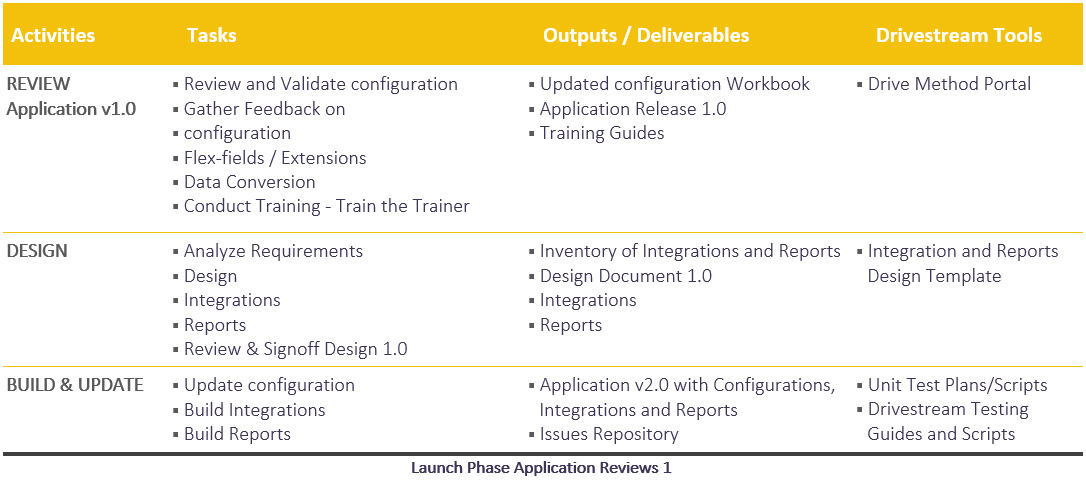
After the completion of Application Review 1.0, the implementation team will document all feedback by business process in DriveMethod. The changes requested are then made to the system and unit tested by the project team. Once the system is ready with the updated configuration, Application review 2.0 is conducted to demonstrate all the changes and get approval.
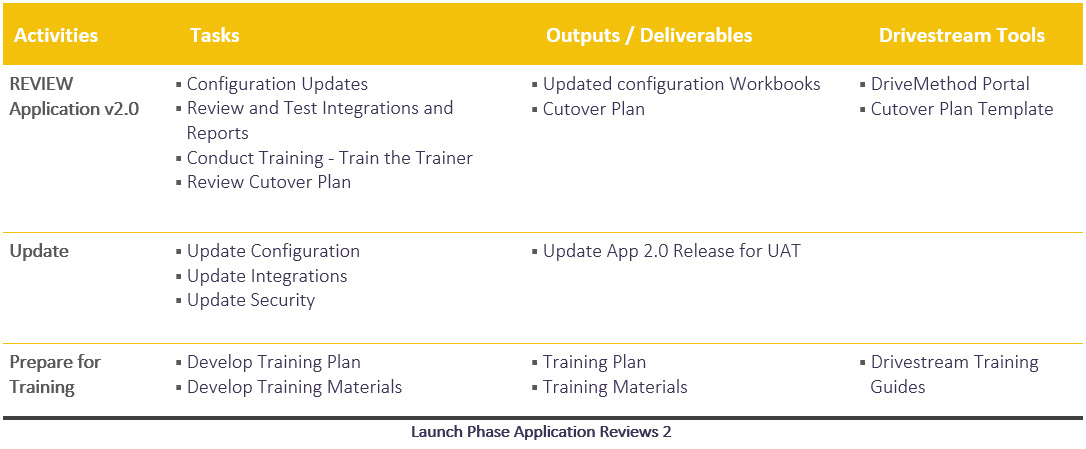
Testing Phase
Testing is a critical part of an Oracle Cloud implementation, and as such, will be a shared responsibility. The following table outlines the type of testing that will be performed. User Acceptance Testing (UAT) is the final testing phase, which upon successful completion, have approved the system to go-live in production.
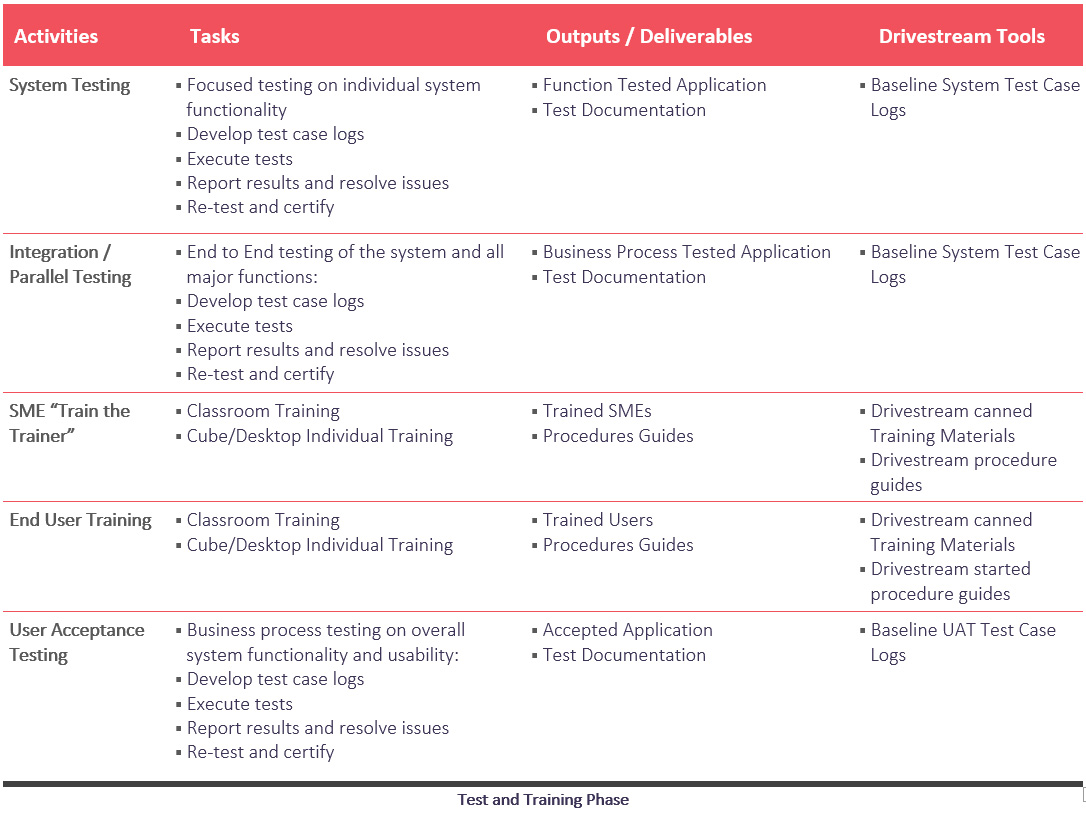
Deploy Phase
During the Deploy phase, Drivestream will complete following tasks:
